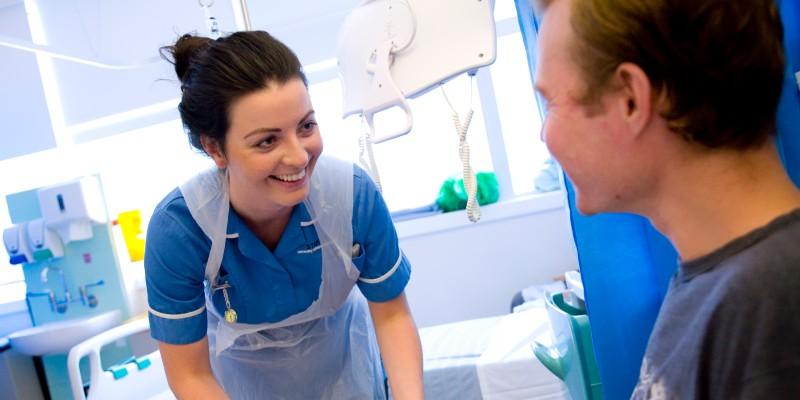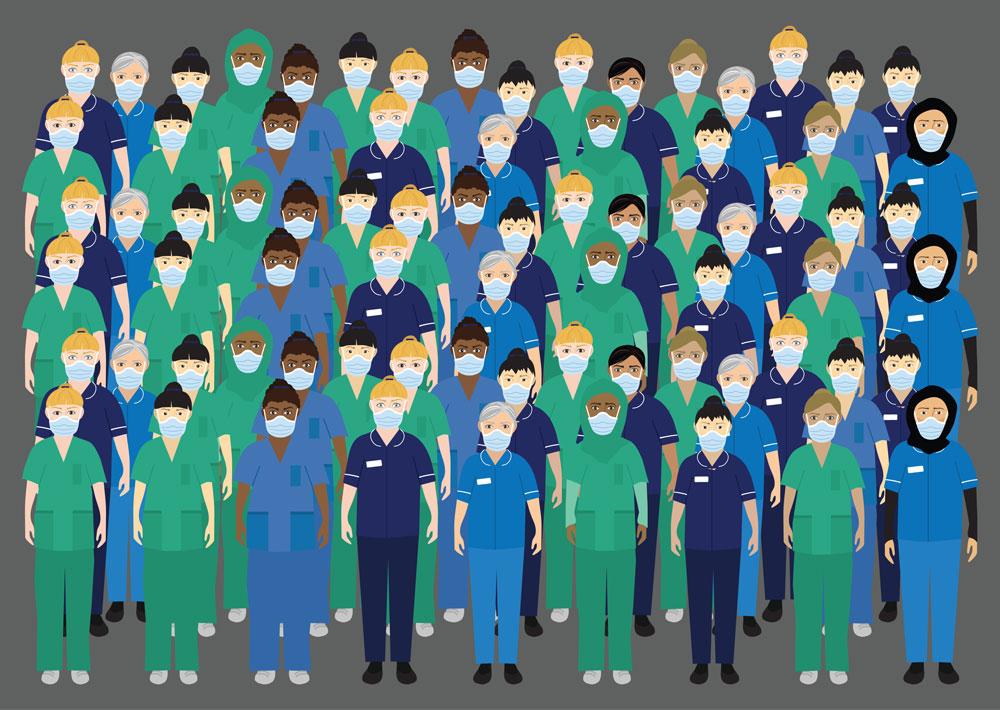Neal Suchak, Senior Policy Advisor at the Recruitment & Employment Confederation, discusses the challenges facing the health and social care sector after the 1 January 2021
To say this year has been like no other for the health and social care sector is an understatement. The sector has faced its toughest challenge since the founding of the NHS. Staff on the ground have worked flat-out to deal with coronavirus. However, even before coronavirus hit, the NHS was already dealing with chronic workforce shortages; with 100,000 vacancies, including 40,000 in nursing and 120,000 in adult social care. The vital role that agency workers play in supporting the NHS cannot be underestimated, and we must get staffing in the health and care sector right.
Where are we now
The Brexit transition period will end on 31 December 2020, at which point the UK and EU’s relationship will be governed, depending on the outcome, either by the EU Withdrawal Agreement and a potential free trade agreement (FTA), or if no deal is reached, WTO rules. FTA negotiations have continued in the background over the summer and autumn, and are currently reaching crunch point.
Whether a new relationship is agreed or not, the end of the Brexit transition period will impact patients in the UK. Access to medicines or access to treatment when travelling or living in the EU will be affected, not to mention the UK's standing as a world-class clinical research hub; the details of this are unsure at present. However, the ability of the NHS and social care system to recruit staff will remain one of the NHS’ biggest challenges, particularly in the midst of this global pandemic.
Is funding the answer?
Last year the Prime Minister pledged to recruit 50,000 more nurses into the NHS; welcome news at the time, but is it achievable? Boris Johnson was later forced to admit that 19,000 of the 50,000 increase in numbers would come from better retention of those already in the NHS. The government has at least reintroduced financial support for student nurses and midwives, of between £5,000 and £8,000 a year, in a bid to boost the number of staff trained in the UK.
Nevertheless, data from the Nursing and Midwifery Council (NMC) shows that the number of nurses and midwives from the European Economic Area (EEA) on its register has fallen for the last three years in a row. Numbers arriving from Spain, Italy, Romania, Portugal and the Republic of Ireland have slowed to a trickle. However, overall there is a new record number of people on the register – 716,607. Last year brought the single biggest ever annual increase of 18,370 to the total.
But the NMC said that in the future only a fraction of the number of overseas nurses and midwives would come to the UK because of international travel restrictions to reduce the spread of Covid-19. That, plus the temporary closure during the pandemic of test centres where new arrivals have their skills assessed, means that about 1,000 fewer nurses and midwives came over throughout the early part of summer. As the pandemic appears to be heading towards a second wave, these restrictions are likely to remain in force.
In August, new government funding was announced to double nursing apprentices. The package worth £172 million will help to train thousands more apprentices and will enable healthcare employers to take on up to 2,000 nursing degree apprentices every year over the next four years. Nursing degree apprenticeships provide a route into nursing where people can train to nationally recognised standards and ‘earn as they learn’, benefiting those for whom a full-time university course is not an option.
Adding to the shortage occupation list?
The NHS in England employs around 1.3 million people, with a further 300,000 across Scotland, Wales and Northern Ireland. No one can deny the contribution that EU and non-EU workers make to the NHS and care sector, and concerns have been raised about international recruitment after Brexit.
The Migration Advisory Committee (MAC) - which provides independent advice to the government - has recently reported on the new immigration system that will come into operation when the transition period with the EU ends on 31 December 2020. The MAC set out its recommendations for additions to the Shortage Occupation List (SOL), which includes senior care workers and nursing assistants. The NHS Confederation’s interim CEO Danny Mortimer welcomed the additions to the SOL, but stressed that ‘social care workers in less senior roles must also be taken into consideration in any new immigration system, as their role is just as important in caring for some of our most vulnerable people’. This is a key gap in the government’s plans and something the REC have previously raised with government.
The MAC warns of the stark consequences of low wages in social care and has called for jobs within the sector to be made more attractive to UK workers by increasing salaries rather than relying on migrants. These changes alone are unlikely to end the nursing workforce crisis, particularly given the length it takes to qualify. The government must therefore look to remove barriers that prevent overseas-qualified, and much needed, health and care professionals from working in the UK. The introduction of free visa extensions for health workers during the pandemic has been welcome, as has the removal of the health immigration surcharge, but more must be done.
Furthermore, with rising unemployment and sectors such as retail and hospitality struggling, there needs to be funding to enable those who want to retrain and help in the care sector to do so.
Utilising the agency sector
Agency staff have always provided a vital lifeline to the NHS, and this has been very evident during the pandemic. A recent REC poll of health and social care recruiters found that almost 50 per cent had seen an increase in demand for agency health and social care workers during the coronavirus crisis alone. They provide the NHS with the extra support that it needs in times of increased demand and are vital in ensuring patient safety. Furthermore, specialist health and social care recruiters are experts in workforce planning, and are perfectly placed to identify where problems lie and offer immediate solutions. Behind the scenes, recruiters have been working round the clock to keep wards and care homes going. One of the largest REC members made almost 8,000 healthcare placements between March and May this year at the height of the pandemic. Without these experienced agency workers, many more people would have potentially lost their lives.
At the start of the pandemic, Helen Whately, the Minister of State for Care, wrote an open letter to healthcare recruitment agencies, calling upon them to work in constructive partnership with the NHS during the pandemic. The REC followed this up with a Healthcare Manifesto, setting out our roadmap for how specialist health and social care recruiters can help at this time of national emergency. We outlined four steps which would help bridge staffing shortages and ensure that recruitment professionals are partners to the sector during the Covid-19 crisis and its aftermath.
Working together
Nurses and midwives make up the largest numbers of the NHS workforce, and it's been very fitting that this year has been designated as the Year of the Nurse and the Midwife by the World Health Organisation. A substantial part of this workforce is made up of temporary workers - highly qualified, experienced and fully vetted staff who help support the NHS and care sector. Creating a workforce model that uses a joined-up hybrid of substantive, bank and agency staff will be needed in order to ensure that patient safety is maintained, delivering a health service fit for the future.
Agency staff fill around 15,000 nursing and medical vacancies every quarter, as well as other support roles. The most effective way for this contribution to work going forward is through a formal partnership between the staffing industry, the Department for Health and Social Care and the NHS. This could take shape in many ways – for example, a stakeholder forum to drive cooperation in workforce planning, or a partnership to review and set standards in recruitment.
But this spirit of collaboration must continue beyond the pandemic and beyond Brexit, and lead to real changes in attitudes. We are all striving towards the same goal – a well-functioning, efficient health service with a fantastic record – and the expertise and experience of agencies will be vital in making that a reality.





